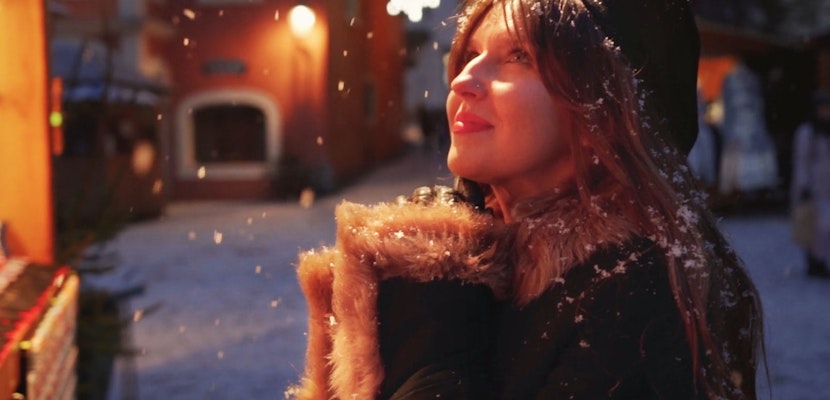Hi guys! Jordan with Motion Array and today we’re going to be learning how to create this Stabilize Motion effect inside of After Effects.
This is a really simple, but powerful effect. We’re going to be using the stabilize motion feature inside of Adobe After Effects to create an unnaturally perfect camera framing with our character in motion. Some people refer to this as the Sherlock holmes effect, as it was featured in the second Sherlock Film starring Robert Downey Jr., while others refer to it as a David Fincher inspired camera trick, as he’s known for perfectly matching camera movement with the movement of characters in his scenes. Either way, the goal is to keep us perfectly in-sync with the character when that would otherwise be impossible. We’re going to start with footage that looks like this, and end with it looking like this. So let’s get started.
To start with, drag your piece of footage overtop of this icon to create a new composition from it. Once it’s in place, decide what part of the composition you want to stabilize with. For me, it’s the character’s eyes, but depending on what you’re footage is, you might want to select a different area to focus on. Maybe it’s an item, or maybe it’s another part of the character.
With that, let’s have our footage selected, and then go down to our tracker window. If you can’t find it, go to Window > Tracker. Now select Stabilize Motion. To start out with, I’d suggest seeing what just position will get you, but as you try different pieces of footage, try adding scale and rotation to see if you receive a more pleasing effect for your footage.
Take your tracker marker and place it overtop of the item of your choice. Try and place it over an area of high contrast, so the pupil of our character’s eye is a really good choice, and stretch the first box around the edges of the area where the contrast begins. What this means for us is that because the pupil is black, we stretch the first box so that it starts to include the whites of their eyes. Then we take the second box and hold a bit of the wider context.
We’re using the Stabilize Motion effect, but if you wanted to take a look at how to track objects in your scene, we have a video all about that. It’s this one here, and the link to find it is in the description below.
With that, you can go ahead and make sure that the target is the video layer itself. It’s not a worry if this is the only layer you’re working with but if you’re working with this effect in a larger project it’s always good to check. Go ahead and hit analyze forward and you can watch After Effects track the shot.
Once it’s complete, hit apply, select ok, and your effect has been added to your footage. What you can see is that it’s basically taken the place you’ve designated, and made sure that it’s not moving really that much at all. Basically keeping that object in a perfect theoretical frame. I’ll show you what I mean by drawing a border around our character’s eyes. And I’ll show you that this outline isn’t moving at all within the frame. And when we play, we can see that our character’s eyes don’t exit this box. And just to show the contrast, I’ll drag and drop the original footage back into frame. And you can see what we had to start with.
Okay so we’re actually nearly done, but we need to do a little bit of cleanup. You can see that our actual framing is leaving the confines of our composition, leaving us with the edges of our frame being empty space that obviously displays the mechanism this effect is working off of. But the solution is simple. We’re just going to scale up our footage and move it over to the most central position, so that at the moment of greatest positional movement, the footage still stays within the confines of the framing. It may take a couple tweaks and a few rounds of trial and error, but you should eventually find the sweet spot where you footage all stays in frame and looks like footage. This should also go without saying, but now that you see that you’ll have to scale up, you should always plan to shoot footage that you’re going to use for this effect much wider than you anticipate. Additionally, shooting at higher resolutions like 4K can give you more flexibility with shooting wider and being able to scale up tighter without degrading your footage. As long as you’re still exporting in 1080p.
But guys, here at Motion Array we don’t just want to give you the effect and call it quits, we want to show you how to take it to the furthest possible degree to make it as great as it can be. So we’re going to take this footage and add some suspenseful ambient music to it to add the idea that we’re entering into this character’s mind a little bit.
And that’s a simple way to get some added intensity to an otherwise normal shot.
I hope you found this video helpful. If you did, as always we’ve got lots of other tutorials ready to view for free here at Motionarray.com. Please give us a thumbs up and if you’d like to see more tutorials, we’ve got lots of other Premiere Pro Tutorials, After Effects tutorials, and filmmaking tutorials for you to check out!



























